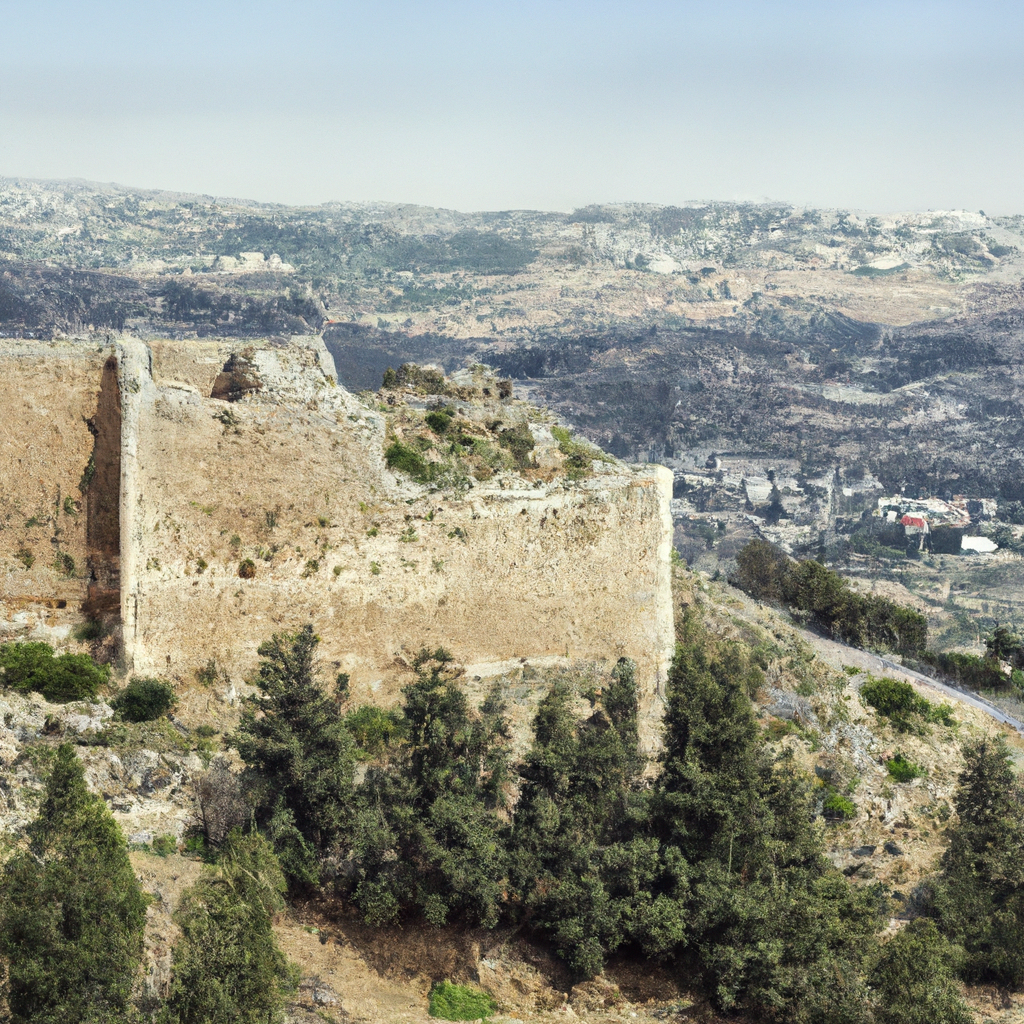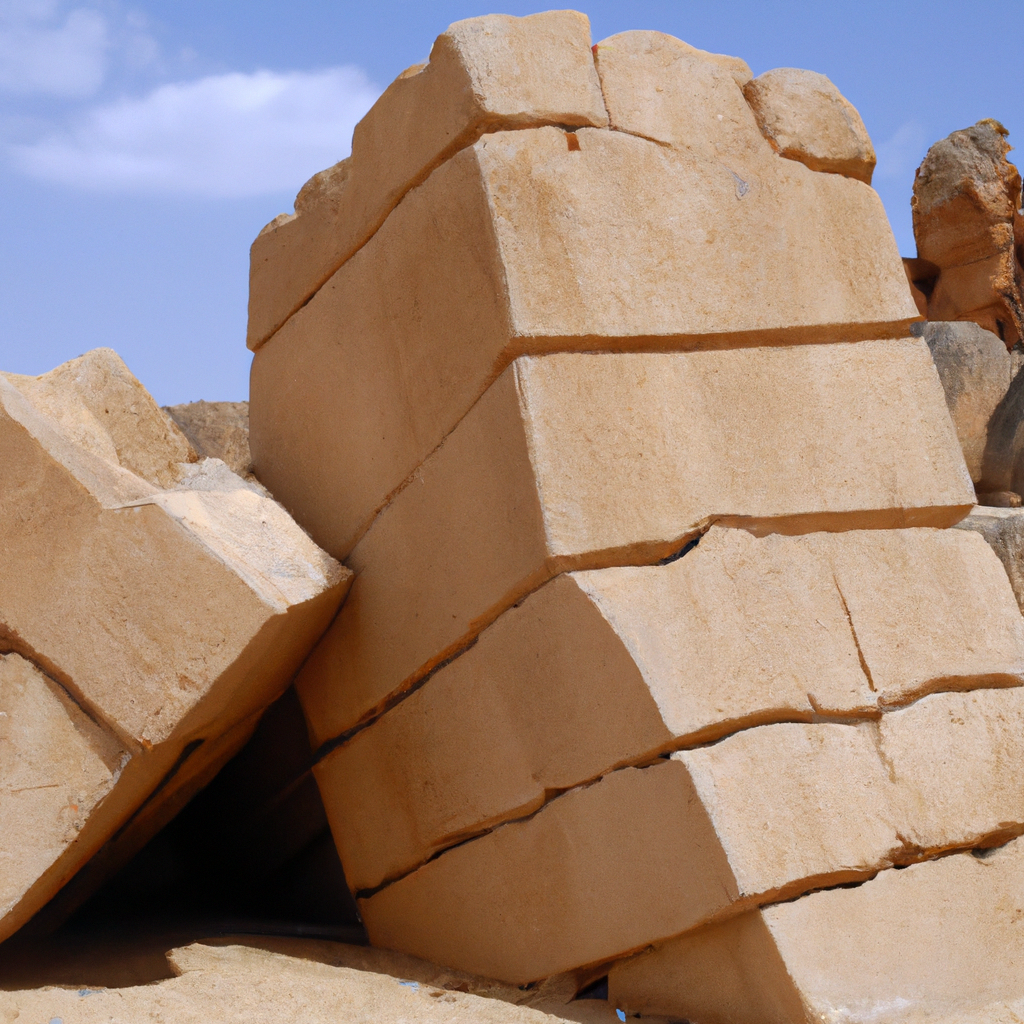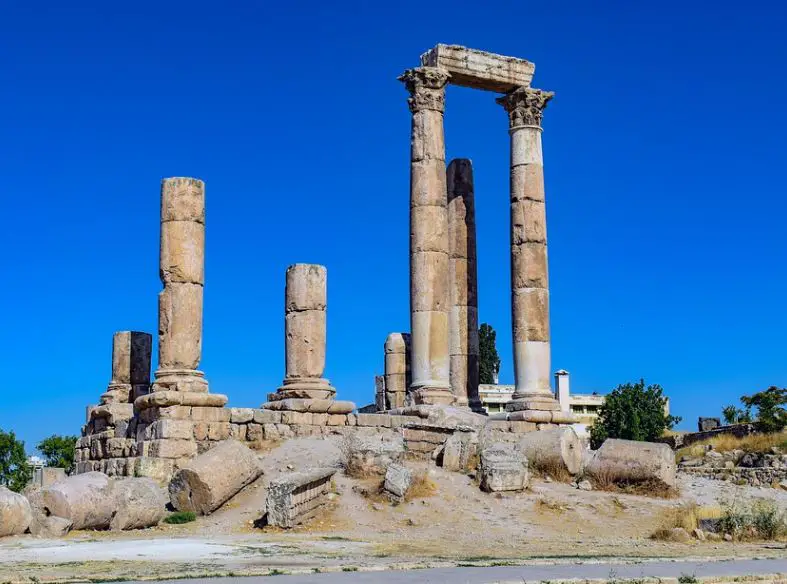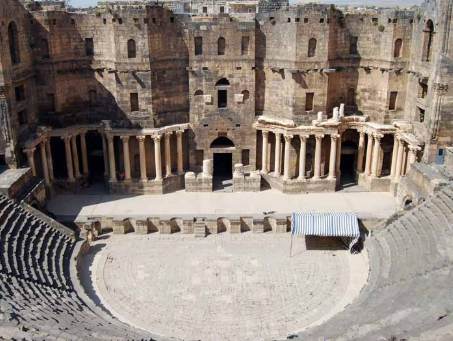Madaba Mosaic Map In Jordan: Overview,Prominent Features,History,Interesting facts
Overview:
The Madaba Mosaic Map is a large, detailed mosaic map of the Holy Land that was found in the city of Madaba, Jordan. The map dates back to the 6th century AD and is the oldest known map of the region from the Byzantine era, depicting Jerusalem and other holy sites in the area. The Madaba Map is made up of around two million pieces of coloured stone and is located on the floor of St. George's Church in Madaba, which is believed to have been built over a 6th-century Byzantine church where the mosaic was originally found. The mosaic is composed of several scenes and remains a valuable source of evidence for historians who seek to understand life in the region during that time. You can learn history, culture, and heritage through these magnificent monuments in Jordan
Prominent Features:
1. It is the oldest surviving map of the region, dating back to the 6th century. 2. It is composed of over 2 million pieces of hand-cut colored stone and depicts hills, rivers, and the sites of over 150 cities. 3. Many of the features depicted in the map continue to be recognizable today, such as the Dead Sea, the Jordan River, and the Sea of Galilee. 4. The central feature is Jerusalem, from which Mt. Zion and the Holy Sepulchre are also visible. 5. It is believed to have been created by monks of the Church of St. George to provide visual reference of the pilgrimage sites of the region. 6. It is almost 16ft x 32ft and is a UNESCO World Heritage Site. This national monument of Jordan portrays the history and culture of the country.
History:
The Madaba Mosaic Map is a famous and incredibly detailed 6th century Byzantine-era mosaic floor map of the Middle East, located in the Greek Orthodox church of Saint George in the city of Madaba, Jordan. The beautifully detailed and vibrant mosaic is made of small colored stones and depicts much of the Holy Land of the time, stretching from Lebanon in the north to the Nile Delta in the south. It also includes Israel, the Arabian Peninsula, and parts of Turkey and Egypt. The Madaba Map was discovered on July 14, 1897, when a mishap in the church of St. George brought down several of its stone blocks. The mosaic was unveiled to the world in its entirety three years later, and has since become one of the most popular and historically significant archeological sites in the region. Experts believe it was made around 560 AD, following the Council of Chalcedon and, as such, provides an insight not only into the geographical knowledge of the period, but also into the religious and cultural elements of the time. The Madaba Map features some 500 details related to 39 different Biblical locations, including the Valley of Jericho, the Dead Sea, and Neapolis (now Nablus). It also includes numerous cities that no longer exist, such as Alexandria, Maiumas, and Hippos. The layout of the map is based on the traditional map of Palestine as conceived by Eusebius of Caesarea and follows the classical cartographic system of a set of longitudinal and latitudinal lines with toponyms indicated in each section. Although much of the Madaba Map has been restored in the last several decades, it continues to attract visitors and scholars across the globe and remains a remarkable testimony to the high level of craftsmanship and knowledge of the time. You must visit one of these historical places in Jordan on your Jordan tour
Interesting facts:
1. The Madaba Mosaic Map, created in the 6th-century AD, is the oldest known geographic floor mosaic made in the Middle East. 2. It was created for the Church of the Apostles in Madaba, Jordan, and depicts a map of the Holy Land and structure of Jerusalem during the 6th century. 3. The mosaic map contains flat and three-dimensional representations of over 150 geographical sites within Palestine, as well as parts of Egypt, Sinai, and the Jordan desert. 4. It is filled with vibrant colors and captivating symbols and depicts topographical features, like rivers and reliefs, cities and villages. 5. The map is an impressive example of late antique craftsmanship and cartography. 6. The mosaic was almost lost to history when it was discovered beneath a church building during the process of repairing it in the late 1800s. 7. The mosaic map served as an inspiration for Catholics visiting the Holy Land, not only during the Byzantine era, but also in modern times. 8. Some of the inscriptions and the texts are written in both Greek and Arabic as a sign of the importance and influence of both civilizations in the region. 9. The map has additional educational and architectural value as it is an original source of artistic expression and a testament to the interaction between the Eastern and Western civilizations during the Byzantine period. Visit one of the famous monuments of Jordan with your friends and family.
Explore Jordan most popular tourist destination with us. Madaba Mosaic Map In Jordan: Overview,Prominent Features,History,Interesting facts,which is 35.14 km away from Jordan main town, is the most popular destination to add in your travel wishlist.
-
City:
Jordan
-
state:
Jordan
-
country:
Jordan
-
country code:
JO
-
postcode:
11118
Location:
Jordan Jordan





 In Jordan.png)
 In Jordan.png)









